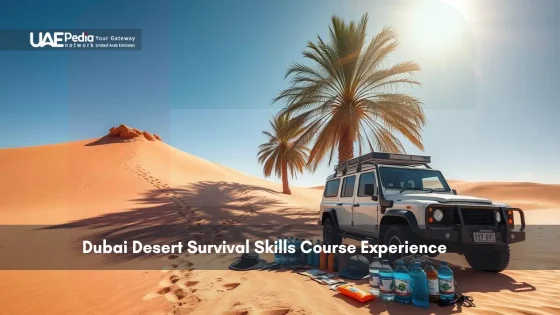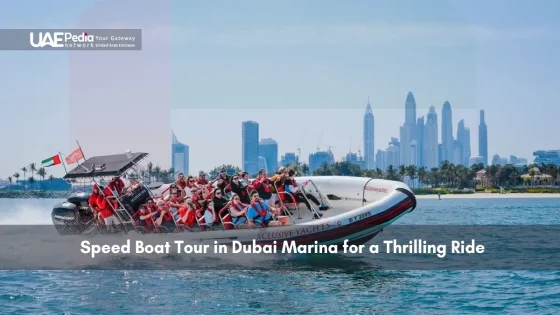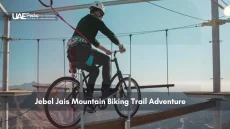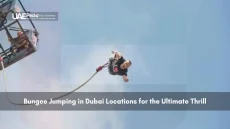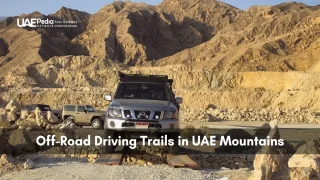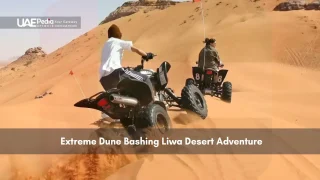Picture golden sands stretching beyond the horizon – but this isn’t just a backdrop for Instagram. Near Jebel Jais, a 24-hour immersion transforms visitors into confident navigators of harsh environments. Think less “reality TV drama,” more hands-on wisdom passed down through generations.
You’ll master fire-starting techniques using ancient methods, purify water like Bedouin travelers, and construct shelters sturdy enough to withstand midnight winds. Expert guides – many with military or rescue backgrounds – don’t just demonstrate; they challenge you to adapt when sudden sandstorms shift plans.
This isn’t about ticking boxes. It’s about discovering how to read subtle landscape clues or use the stars as navigation tools. Participants often laugh about their first failed attempts at friction fires – until that triumphant moment when sparks catch.
- Build emergency shelters using only natural materials
- Learn water sourcing methods proven in arid climates
- Gain first-aid strategies tailored to wilderness scenarios
Discover the Dubai Desert Survival Skills Course Experience
Here, the wilderness isn’t just a view—it’s a classroom without walls. You’ll trade hotel slippers for sturdy boots as instructors (think ex-search-and-rescue pros) teach you to thrive where GPS signals vanish. “Your mind is your best tool out here,” one guide told me while demonstrating how to spot edible plants.
Expect to laugh at your first failed shelter—then cheer when palm fronds finally hold against gusty winds. The program blends ancient wisdom with modern science: Bedouin water-finding tricks meet solar stills made from recycled materials. Groups stay small, so you get personalized tips like how to read cloud patterns for incoming weather shifts.
| Technique | Traditional Method | Modern Adaptation |
|---|---|---|
| Shelter Building | Palm trunk frames | Reflective thermal blankets |
| Fire Starting | Flint & steel | Magnesium fire starters |
| Navigation | Star constellations | Analog compass basics |
Pressure tests come without warning—like when instructors “lose” the map during a midday hike. That’s when calmness kicks in. You’ll leave with more than blisters: a newfound trust in your instincts and stories about that time you brewed tea using sun-heated rocks.
Ready to swap Wi-Fi passwords for sunrise summit views? This isn’t just training—it’s permission to rediscover your scrappiest self.
Understanding the Course Structure and Schedule
Imagine trading your watch for a sun-dial. This 24-hour journey follows nature’s rhythm while keeping modern learners on track. Let’s break down how every moment builds confidence through carefully crafted challenges.
24-Hour Adventure Timeline
Dawn light signals arrival – you’ll meet guides and sort gear while sipping karak chai. First three hours focus on shelter construction using native materials. “Wind direction changes everything here,” instructors remind as teams test palm-frond roofs.
Midday brings fire-making drills. You’ll practice flint techniques and magnesium strikers while learning heat-retention tricks. Afternoon shifts to foraging: identifying resilient plants and crafting simple traps (don’t worry – no critters get harmed).
Sunset marks navigation training. Stars become your map during evening hikes. Post-dinner, surprise scenarios test crisis response – like sudden “sandstorm” simulations using flour bags. Morning cleanup includes debris-free camp breakdown, leaving only footprints.
Participant Requirements and Group Size
Groups cap at 12 for personalized attention. Minimum age is 16 (under 18 needs guardian consent). Weight limits? Just a 265-pound max for safety harnesses during dune climbs. No marathon fitness required, but expect 4+ miles of walking.
You’ll need closed-toe shoes and a willingness to laugh when your first shelter collapses. Pro tip: Bring moisturizer – dry air hits harder than midday sun. Guides adapt activities for diverse abilities, proving wilderness skills aren’t about brute strength but smart adaptation.
Embrace the dubai desert survival skills course for Expert Wilderness Techniques
Harsh sun beats down as you kneel to inspect a cluster of rocks – these aren’t decorations, but potential shelter anchors. This hands-on training turns theory into muscle memory, blending ancestral wisdom with modern science. You’ll quickly learn why every choice matters when shade becomes currency and hydration means survival.
Building Emergency Shelters and Foraging
Guides demonstrate how to weave palm trunks into wind-resistant frames. “Angle your roof 30 degrees,” advises instructor Rashid, adjusting a student’s lopsided structure. Teams scavenge for materials:
- Sand-packed walls for insulation
- Overhead canopy gaps for airflow
- Edible saltbush plants near dry riverbeds
One participant grinned after spotting ghaf tree seeds – a protein-rich snack locals have eaten for centuries.
Mastering Fire Lighting and Water Purification
Flint sparks fly during twilight drills. Instructors reveal three golden rules:
- Collect tinder before dusk (dry grasses work best)
- Build a teepee structure for oxygen flow
- Shield newborn flames from sudden breezes
Later, you’ll construct solar stills using plastic sheets and condensation pits. “One setup can yield two liters daily,” notes guide Amal, showing how to layer vegetation for cleaner yields.
| Method | Traditional Approach | Current Tools |
|---|---|---|
| Shelter Insulation | Layered animal hides | Space blankets |
| Ignition Sources | Hand-drilled sticks | Ferrocerium rods |
| Water Collection | Dew traps | Portable filters |
“Your first fire might take 20 minutes. By day’s end? Under 90 seconds – that’s progress you can feel.”
Master Key Wilderness Survival Skills and Techniques
A well-honed blade glints in the sunlight—not as a weapon, but as a lifeline. This segment transforms everyday tools into critical allies, blending precision with practicality. You’ll discover how a simple rope coil can mean the difference between stability and disaster.
Knife Skills and Knot Tying
Instructors start by demonstrating the “three-finger grip”—a technique that balances control and safety during carving tasks. You’ll practice:
- Notching wood for friction fires
- Carving emergency tent stakes
- Securing shelters with trucker’s hitch knots
One participant nearly cheered after lashing together a stretcher using only paracord. “Knots are like passwords,” joked guide Lena. “Master a few, and suddenly everything holds together.”
Wilderness First Aid and Rescue Fundamentals
When a teammate “sprains” an ankle during a drill, you’ll spring into action. Training covers:
- Pressure bandage application for bleeds
- Improvised splints using trekking poles
- Signal mirror techniques for rescue teams
Tables turn quickly—you might find yourself diagnosing heat exhaustion symptoms while rationing water supplies. These scenarios aren’t about perfection, but adapting under pressure.
“Your first-aid kit is only as good as your ability to improvise. That bandana? It’s a sling, tourniquet, and water filter all in one.”
By sunset, you’ll realize true preparedness isn’t about gear—it’s about trusting your hands to remember what your mind might panic and forget.
Insights from Expert Instructors and Real-Life Survival Scenarios
Cracked earth crunches underfoot as your instructor halts the group—“Who’s ready for a sandstorm?” This moment captures the program’s essence: controlled chaos where textbook knowledge meets raw reality. Guides with decade-long field experience craft scenarios that mirror actual emergencies faced in arid regions.
Real-World Challenges in the Desert
One instructor recounts tracking a lost hiker using only crescent moon shadows. Another shares how sudden temperature drops taught them to prioritize thermal regulation over water conservation. These stories aren’t campfire tales—they’re blueprints for problem-solving when gadgets fail.
During night exercises, teams navigate using Orion’s Belt while managing limited flashlight batteries. A recent group learned this the hard way when their GPS died mid-route. “Panic wastes calories,” reminded guide Nadia, demonstrating how to repurpose a scarf as a distress signal.
| Challenge | Traditional Approach | Modern Solution |
|---|---|---|
| Extreme Heat | Underground cooling pits | Phase-change cooling towels |
| Fire Management | Controlled ember nests | Fire-resistant containment bags |
| Flash Floods | Wadi bank observation | Weather alert radios |
Quick decisions define success here. When a simulated injury occurs, participants triage using bandanas and trekking poles instead of sterile kits. These pressure tests reveal who remembers crucial details from the course—like keeping flames low during windy conditions.
Through it all, instructors emphasize adaptability. As Bear Grylls’ team member Jamal puts it: “Survival isn’t about strength—it’s about smart repetition until reactions become reflex.” You’ll leave understanding why every blister and failed attempt matters more than perfect execution.
Exploring the Unique Desert Environment of the UAE
Sunlight paints the dunes in honeyed tones—but these sands demand more than admiration. The Emirates’ wilderness reveals itself through shifting ridges taller than apartment buildings, secret water-carved wadis, and limestone cliffs that glow amber at dusk. This terrain becomes your compass during the program, teaching navigation methods refined over millennia.
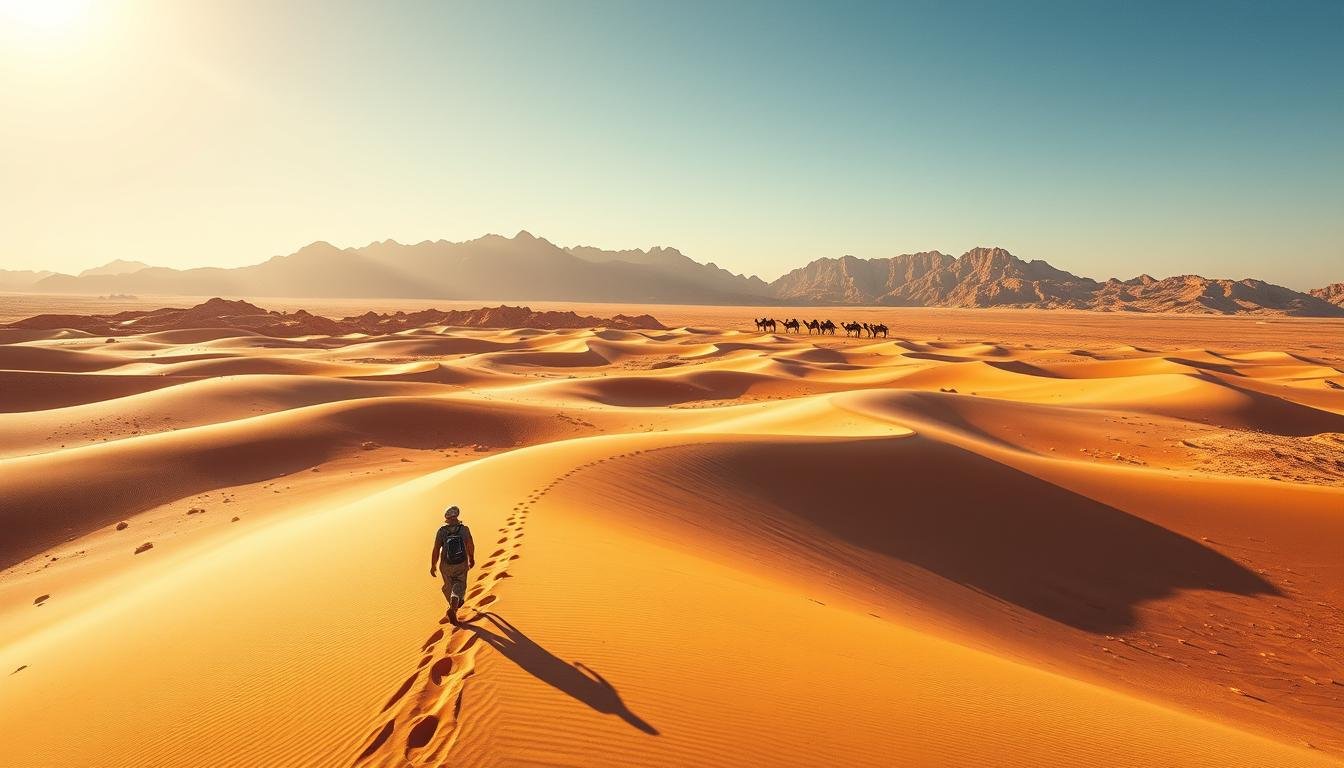
Mastering Nature’s Obstacle Course
Guides demonstrate how to “read the sand like a book”—spotting crusted surfaces that signal firmer footing or crescent-shaped barchans indicating wind direction. One participant laughed after mistaking a mirage for an oasis, then nailed their bearings using shadow-tip navigation. Key lessons include:
- Climbing dune slip-faces at 45-degree angles to conserve energy
- Identifying wadi entry points using rock erosion patterns
- Using cliff echoes to gauge distances during low visibility
| Terrain Feature | Traditional Navigation | Modern Tool |
|---|---|---|
| Dunes | Stick-shadow tracking | Altimeter watches |
| Wadis | Bird migration paths | Topographic maps |
| Cliffs | Star alignments | Laser rangefinders |
Open spaces amplify fire risks—and opportunities. Instructors reveal how to position flames downwind of shelters while using heat reflection techniques. “That sunset isn’t just pretty,” notes guide Fatima. “It’s your timer—finish tasks before twilight steals your warmth.”
By day’s end, you’ll see cracks in rocks as potential water reservoirs and feel how night winds sculpt new pathways. This transformative experience peaks during overnight camping excursions, where the Milky Way becomes your true north. Ready to trade street signs for nature’s subtle cues?
Camp Accommodations and Authentic Desert Hospitality
The scent of cardamom-spiced coffee greets you as dusk settles – welcome to basecamp. This isn’t roughing it. Think plush Bedouin-style cushions under star-speckled skies, where crackling fires replace conference rooms. After a day mastering practical skills, you’ll recharge in communal spaces designed for both connection and quiet reflection.
On-Site Amenities and Meal Arrangements
Shared kitchens buzz with teams prepping sunset feasts using local ingredients. Menus blend tradition with practicality: dates stuffed with almonds fuel morning drills, while harees (slow-cooked wheat porridge) warms night-chilled hands. Dietary needs? Chefs adapt recipes faster than you can say “shukran.”
| Feature | Traditional Element | Modern Comfort |
|---|---|---|
| Sleeping Areas | Goat-hair tents | Climate-controlled pods |
| Hydration | Clay water jars | Filtered refill stations |
| Dining | Ground-seated circles | Ergonomic camp chairs |
Patios overlook rust-hued mountains where dawn light paints cliff faces gold. “Meals here aren’t just fuel,” notes chef Amna while serving saffron-infused lamb. “They’re reminders that survival thrives on community.”
Mornings begin with robust breakfast spreads – think za’atar-dusted eggs and fresh khubz bread. Need downtime? Solar-powered charging stations nestle beside hammocks strung between acacia trees. It’s this balance – rugged skill-building cushioned by thoughtful touches – that turns strangers into allies under the stars.
Building Confidence Through Hands-On Survival Challenges
Your palms sting from rope burns as twilight paints the dunes purple—this is where growth happens. Participants often discover their limits aren’t where they thought. One hiker recalled trembling during her first night alone under the stars—until recalling navigation tricks that guided her back to camp.
From Doubt to Determination
Tasks push bodies and minds equally. Teams might spend hours reinforcing shelters against mock sandstorms, muscles burning as wind machines roar. Others practice rationing water supplies during extended treks. “You learn to negotiate with yourself,” laughs recent attendee Clara. “One more dune becomes ten—then suddenly you’re cheering at the summit.”
| Challenge | Physical Demand | Mental Skill Gained |
|---|---|---|
| Shelter Building | Upper body strength | Spatial reasoning |
| Night Navigation | Stamina | Risk assessment |
| Resource Management | Endurance | Prioritization |
Instructors design scenarios where failure teaches faster than success. A collapsed tarp becomes a lesson in anchor physics. A misplaced compass leads to creative problem-solving. Groups bond over shared struggles—like the time a team brewed tea using solar reflectors after losing their fire kit.
“These challenges aren’t about being the strongest. They’re about realizing you’re tougher than yesterday’s self.”
This transformative approach fuels personal breakthroughs. Many leave astonished by their capacity to adapt—skills that translate beyond arid environments. Ready to test your resilience? Outdoor leadership programs prove growth thrives where comfort zones end.
Enhance Your Skills with Additional Wilderness First Aid Training
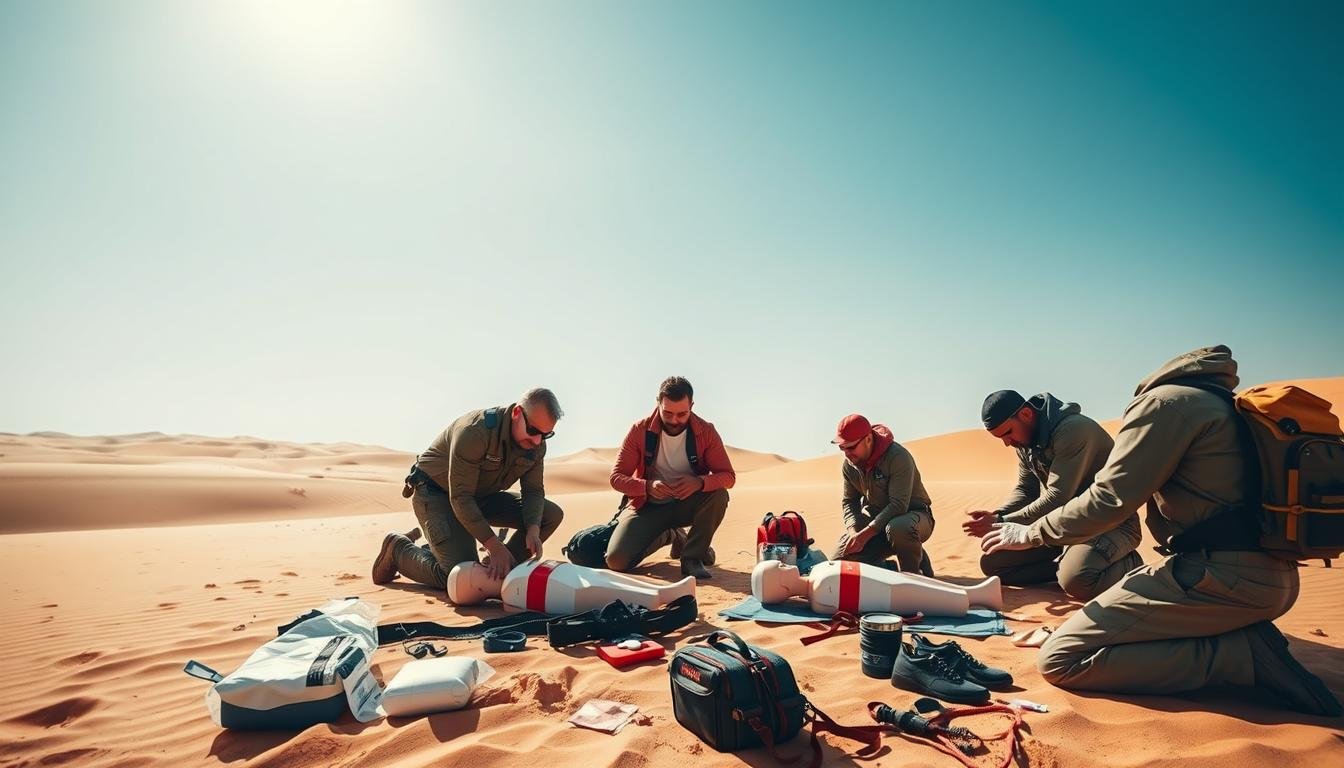
Picture this: a teammate twists an ankle mid-hike, miles from the nearest road. That’s where wilderness first aid transforms from theory to lifesaver. This training doesn’t just check boxes—it rewires how you assess risks and respond under pressure.
Certification Benefits and Practical Applications
Sixteen hours of hands-on drills teach you to stabilize fractures using trekking poles, recognize dehydration signs before thirst hits, and improvise splints from everyday gear. “Your pack isn’t complete without medical knowledge,” notes instructor Layla during mock emergency drills.
Key advantages include:
- Validated certification recognized by outdoor employers
- Rapid skill application in remote environments
- Confidence to lead during group emergencies
Courses like wilderness first aid training blend scenario-based learning with real-time feedback. You’ll practice wound care using supplies from your kit—then learn to replicate techniques with torn clothing if resources run low.
| Scenario | Traditional Response | Modern Adaptation |
|---|---|---|
| Heat Exhaustion | Rest in shade | Cooling vest application |
| Snake Bites | Pressure immobilization | Portable suction devices |
| Fractures | Branch splints | Inflatable casts |
Certification arrives within 48 hours—faster than most desert mirages vanish. Whether you’re leading expeditions or exploring solo, these skills turn panic into purposeful action. Because in the wild, minutes matter more than gear.
Final Reflections on Your Ultimate Desert Survival Journey
As the last embers of your campfire fade, you’ll realize this journey wasn’t about conquering nature – it was about rediscovering your capacity to adapt. Those blistered hands now tie knots without hesitation. Sun-baked days taught navigation tricks our ancestors relied on, while star-lit nights revealed how little modern gadgets truly matter.
You’ve mastered the art of creating shelter from scarcity and turning parched earth into water sources. These aren’t just party tricks – they’re lifelines that transform how you approach challenges beyond sandy horizons. Remember laughing when your first fire-start attempt fizzled? Now you can spark flames faster than ordering takeout.
This immersive experience leaves more than practical knowledge. It gifts quiet confidence – that thrilling moment when you realize, “I can trust my instincts.” Whether navigating sudden weather shifts or improvising tools, you’ve proven resilience you didn’t know existed.
Ready to write your own story? Share those “I survived!” moments with fellow adventurers online, then explore our next available dates to secure your spot. Because true growth begins where paved roads end – and we’ll be here, ready to welcome you back to the dunes.
The immersive experience runs 24 hours – sunset to sunset – blending daytime skill-building with nighttime scenarios under the stars. You’ll navigate dunes by day, then test your resilience in cooler evening conditions.
Not at all! Guides tailor challenges to all levels. Whether you’re a city slicker or seasoned hiker, you’ll learn fire-starting with flint, purifying water via solar stills, and constructing shade shelters from scratch.
Certified instructors supervise every activity, with satellite comms and 4x4 support on standby. Groups stay small (max 12 people) to ensure personalized attention – you’re challenged but never out of your depth.
Participants must be 16+. The physical demands – like trekking soft sands or lifting makeshift stretchers – require adult stamina. Teens 16-18 need parental consent forms signed beforehand.
You’ll prep campfire meals using provided rations, learning desert-foraging basics. Dietary needs? Notify organizers when booking – they accommodate gluten-free, vegan, and halal requirements seamlessly.
Optional add-on! Post-course, extend your training with a 4-hour session covering wound care, heatstroke response, and emergency signaling. Certificates from UAE-approved providers boost CVs for outdoor careers.
Instructors teach traditional wayfinding – tracking shadows, reading wind patterns, and using the North Star. You’ll craft makeshift compasses and map wadi routes through landform observation.
Lightweight, breathable fabrics (think moisture-wicking shirts) and closed-toe hiking shoes are essential. Pro tip: Bring a shemagh – that iconic checked scarf protects against sun and sand like nothing else!
